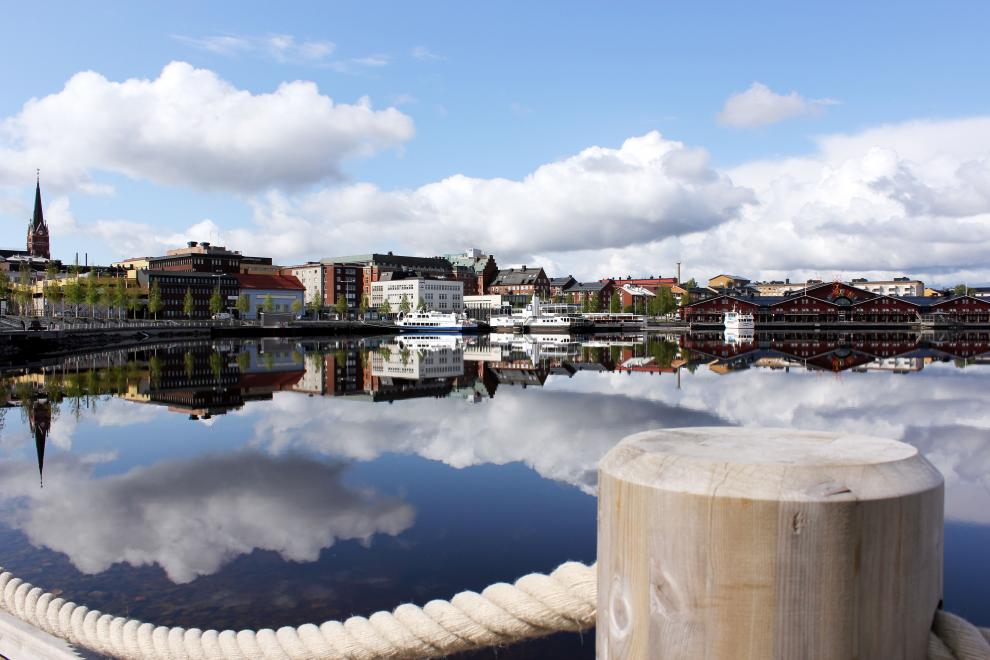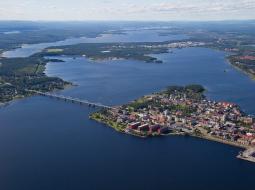Thessaloniki gets ready for its metro launch in November
The underground rapid transit lines have been under construction for almost two decades due to various project delays
 TheMayor.EU logo
TheMayor.EU logo 
The city of Luleå was founded in 1621 around the medieval church in Gammelstad (Luleå Old Town). Due to land elevation, in 1649 the town was moved nearly 6 miles towards the sea and its present location. Today’s municipality came about due to a merge between Nederluleå, Råneå and the city of Luleå in 1969. The river, the sea, the forest and the mining industry has historically shaped the city. The rich salmon fishery in the Middle Ages enhanced the area, but great power struggles in the 1600’s impoverished it. During the 1700’s and 1800’s the ironworks and sawmills were rarely successful. A turning point came in 1856 when Luleå became the county seat of Norrbotten County and gained important institutions. The mining ore line opened in 1888, and led to the city’s population doubling by 1900. For a long time, Nederluleå remained the most populated area of the city. The iron industry arrived in the 1940’s, which led to explosive development with high occupancy. The Luleå University of Technology, founded in 1971, ushered in a new era. As of 2017 there were 77 000 inhabitants and Luleå is currently Sweden’s 28th largest city.
The Luleå region is the largest market in northern Sweden. The region, which consists of the municipalities of Boden, Kalix, Piteå, Älvsbyn and Luleå, is a common labour market with 170 000 inhabitants. The city of Luleå in particular has around 76 000 inhabitants.
The perception of Luleå has changed over the years. Luleå has evolved from an industrial city into a retail metropolis and an university city, whose service sector and creative industries are thriving. The trade and tourism industries are also an important part of the growing service sector.
Luleå is the home of several major innovations and technological milestones. Luleå Science Park is an important centre of development which helps young people to enter into the labour market.
Luleå is the natural choice for setting up a new business in the northernmost part of Sweden. According to Confederation of Swedish Enterprise rankings, Luleå’s business climate is one of the best in Northern Sweden.

Welcome to Luleå — the town by the sea.
Luleå is an exciting city with beautiful nature, interesting culture-life, great shopping and lots of sports events. Luleå is a city of contrasts - having warm and sunny summers and cold winters with lots of snow. In Luleå you will find the metropolitan abundance and pulse as well as the small town´s quality of life.
The Church Town, Gammelstad, is a UNESCO World Heritage Site and one of Luleå’s many attractions. The traditions around the old church and hundreds of church houses endure to this day. This is a popular local gem, attracting visitors from all over the world.
Spanning 1312 islands, Luleå’s archipelago forms part of the Bothnian Bay archipelago, which stretches from Skellefteå to Haparanda. It is the world’s only brackish water archipelago with fresh water from rivers, which affects both flora and fauna. Some of the most visited islands are Sandön, Junkön, Hindersön, Kluntarna, Småskär and Brändöskär. In summer time the islands are served by the municipal archipelago boats.
From September to March you can, under good conditions, spot the fabled northern lights, Aurora Borealis.
Luleå municipality, 971 85 Luleå